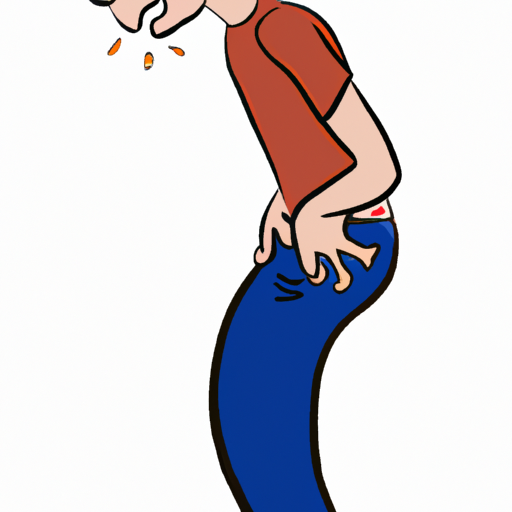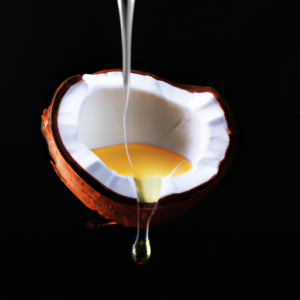

Cystitis is a common and painful urinary tract infection that affects millions of people worldwide. Characterized by inflammation of the bladder, it can cause a range of uncomfortable symptoms and disrupt daily life. In this article, we will explore the various aspects of cystitis, including its symptoms, causes, and diagnosis. Additionally, we will discuss the different treatment options available, including medications and home remedies. Finally, we will delve into the importance of preventative measures and lifestyle changes to avoid recurrent cystitis episodes. Whether you are seeking information on how to manage existing symptoms or looking to prevent future occurrences, this article will provide you with valuable insights and guidance.
Cystitis is a common urinary tract infection that primarily affects women. It is characterized by inflammation of the bladder, leading to a range of uncomfortable symptoms. Understanding the symptoms, causes, and diagnosis of cystitis is crucial for timely treatment and prevention of complications.
Symptoms of cystitis can vary from mild to severe and may include frequent and urgent urination, a burning sensation during urination, cloudy or strong-smelling urine, lower abdominal pain or discomfort, and even blood in the urine. These symptoms can significantly impact a person’s quality of life, causing discomfort and affecting daily activities.
The primary cause of cystitis is the invasion of bacteria into the urinary tract. The most common culprit is Escherichia coli (E. coli), which normally resides in the intestines but can migrate to the urethra and bladder. Women are more susceptible to cystitis due to their shorter urethra, which allows bacteria to enter the bladder more easily. Other risk factors include sexual intercourse, the use of certain types of contraceptives, menopause, urinary catheterization, and compromised immune systems.
Diagnosing cystitis typically involves a thorough medical history and physical examination by a healthcare professional. During the examination, the doctor may inquire about the symptoms experienced, any previous urinary tract infections, and any underlying health conditions. A urine sample analysis is usually performed to detect the presence of bacteria, blood, or abnormal cells. In some cases, additional tests such as a urine culture or imaging studies may be necessary to rule out other conditions or complications.
Once diagnosed, prompt treatment is essential to alleviate symptoms and prevent the infection from spreading to the kidneys. Antibiotics are commonly prescribed to kill the bacteria causing the infection. It is crucial to complete the full course of antibiotics as prescribed by the healthcare professional, even if symptoms improve, to ensure complete eradication of the bacteria.
In addition to antibiotics, several self-care measures can help manage the symptoms of cystitis. These include drinking plenty of water to flush out bacteria, avoiding irritants such as caffeine, alcohol, and spicy foods, using a heating pad to relieve abdominal discomfort, and practicing good hygiene, such as wiping from front to back after using the toilet.
Prevention of cystitis involves maintaining good urinary tract health. This can be achieved by drinking an adequate amount of water, urinating frequently, emptying the bladder completely, and practicing good hygiene habits. For individuals prone to recurrent cystitis, prophylactic antibiotics or other preventive measures may be recommended.
In conclusion, cystitis is a common and uncomfortable urinary tract infection that predominantly affects women. Understanding the symptoms, causes, and diagnosis of cystitis is crucial for timely treatment and prevention of complications. Prompt medical attention
When it comes to treating cystitis, there are various options available, ranging from medications prescribed by healthcare professionals to home remedies that can provide relief. It is crucial to understand that the choice of treatment depends on the severity of symptoms, underlying causes, and individual preferences. In this section, we will explore the most effective treatment options for cystitis, including medications and home remedies.
1. Medications:
a. Antibiotics: Antibiotics are commonly prescribed to treat bacterial cystitis, as they can help eliminate the infection-causing bacteria. The specific type of antibiotic and duration of treatment may vary depending on the severity of symptoms and the strain of bacteria involved. It is essential to complete the entire course of antibiotics, even if symptoms improve, to prevent recurring infections and the development of antibiotic resistance.
b. Pain relievers: Nonsteroidal anti-inflammatory drugs (NSAIDs) such as ibuprofen or acetaminophen can be used to alleviate the pain and discomfort associated with cystitis. These medications can help reduce inflammation and provide temporary relief until the underlying infection is resolved.
c. Urinary analgesics: In some cases, healthcare professionals may prescribe urinary analgesics to relieve bladder pain and discomfort. These medications work by numbing the lining of the bladder and can provide short-term relief from symptoms. However, they are not recommended for long-term use due to potential side effects.
2. Home Remedies:
a. Increased fluid intake: Drinking plenty of water and fluids can help flush out bacteria from the urinary system, reducing the duration and severity of cystitis symptoms. Water is the best choice, but herbal teas and unsweetened cranberry juice may also be beneficial. It is important to avoid caffeine, alcohol, and carbonated beverages, as they can irritate the bladder.
b. Heat therapy: Applying a heating pad or hot water bottle to the lower abdomen can help alleviate pain and discomfort caused by cystitis. The warmth can relax the bladder muscles and reduce inflammation.
c. Good hygiene practices: Maintaining proper hygiene is crucial to prevent the recurrence of cystitis. It is essential to wipe from front to back after using the toilet to avoid introducing bacteria into the urethra. Additionally, urinating before and after sexual intercourse can help flush out any bacteria that may have entered the urethra.
d. Avoiding irritants: Certain substances can irritate the bladder and worsen cystitis symptoms. It is advisable to avoid or limit the consumption of spicy foods, caffeine, alcohol, and acidic beverages. Additionally, avoiding the use of irritating feminine hygiene products and opting for unscented soaps can help prevent further irritation.
You can find out more about this theme here: https://bbgate.com/media/mephedrone-synthesis.55/.
Preventing Cystitis: Lifestyle Changes and Proactive Measures
Cystitis, a common urinary tract infection (UTI) that primarily affects women, can cause discomfort and disrupt daily life. While medical intervention is necessary to effectively treat cystitis, there are several lifestyle changes and proactive measures that individuals can take to reduce the risk of developing this condition. By adopting healthy habits and making simple adjustments, one can significantly lower the chances of cystitis recurrence.
1. Stay Hydrated: Drinking an ample amount of water is crucial for maintaining urinary tract health. By staying hydrated, individuals can help flush out bacteria that may cause cystitis. It is recommended to consume at least eight glasses (64 ounces) of water every day. Additionally, avoiding excessive intake of caffeine and alcohol is advised as they can irritate the bladder and exacerbate cystitis symptoms.
2. Practice Good Personal Hygiene: Maintaining proper personal hygiene is essential to prevent cystitis. It is advisable to wipe from front to back after using the toilet to prevent bacteria from the anal area from reaching the urethra. Additionally, individuals should aim to urinate before and after sexual intercourse to flush out any potential bacteria that may have entered the urethra during intercourse.
3. Wear Breathable Underwear: Wearing breathable cotton underwear allows for better air circulation, reducing the risk of moisture buildup and creating an environment in which bacteria can thrive. Avoiding tight-fitting or synthetic underwear is recommended, as they can trap moisture and heat, increasing the likelihood of bacterial growth.
4. Avoid Irritants: Certain products can irritate the bladder and increase the risk of cystitis. It is advised to avoid using harsh soaps, bubble baths, and scented feminine hygiene products, as they can disrupt the natural balance of bacteria in the urinary tract. Instead, opt for mild, unscented products that are gentle on the genital area.
5. Empty the Bladder Regularly: Holding urine for extended periods can allow bacteria to multiply in the bladder. It is important to maintain a regular urination schedule and avoid delaying trips to the bathroom. Regularly emptying the bladder helps to flush out any potential bacteria and reduces the risk of cystitis.
6. Strengthen the Immune System: A strong immune system plays a crucial role in preventing various infections, including cystitis. Adopting a healthy lifestyle that includes regular exercise, a balanced diet rich in fruits and vegetables, and sufficient sleep can help strengthen the immune system and reduce the likelihood of contracting cystitis.


